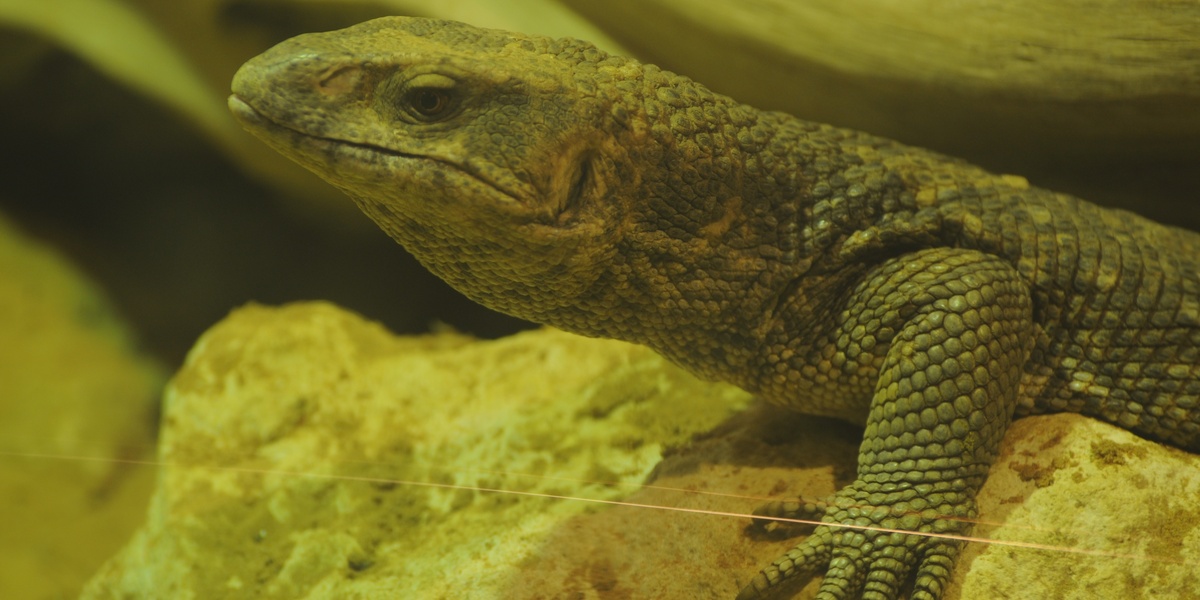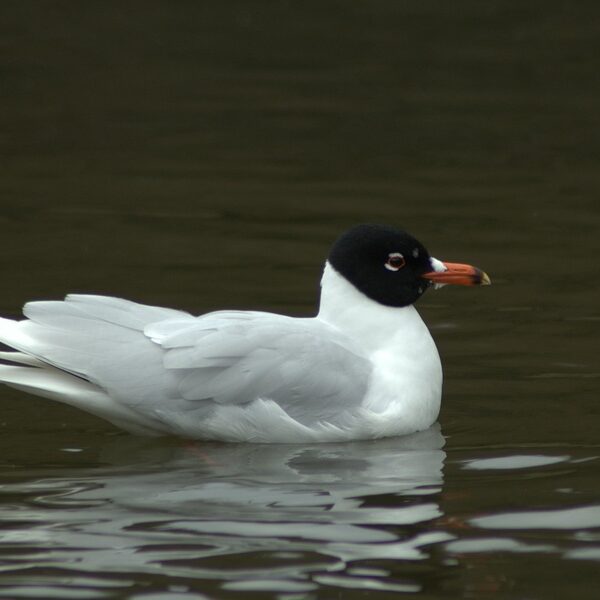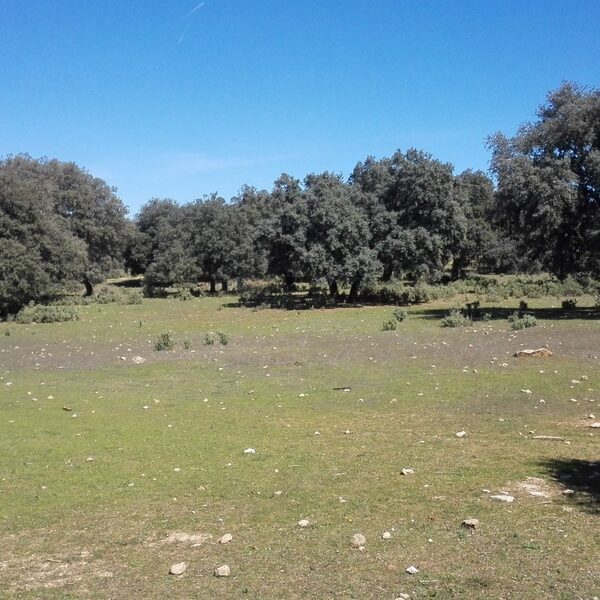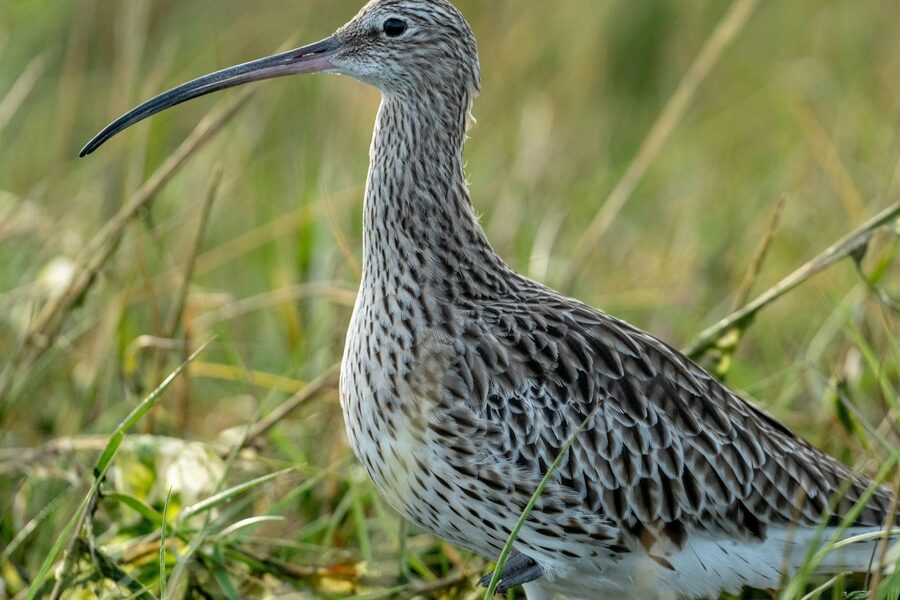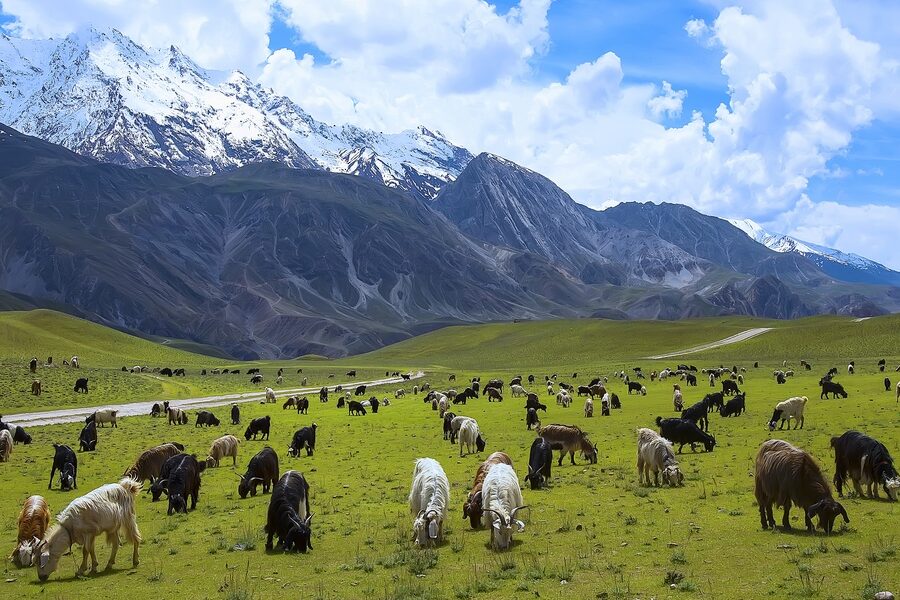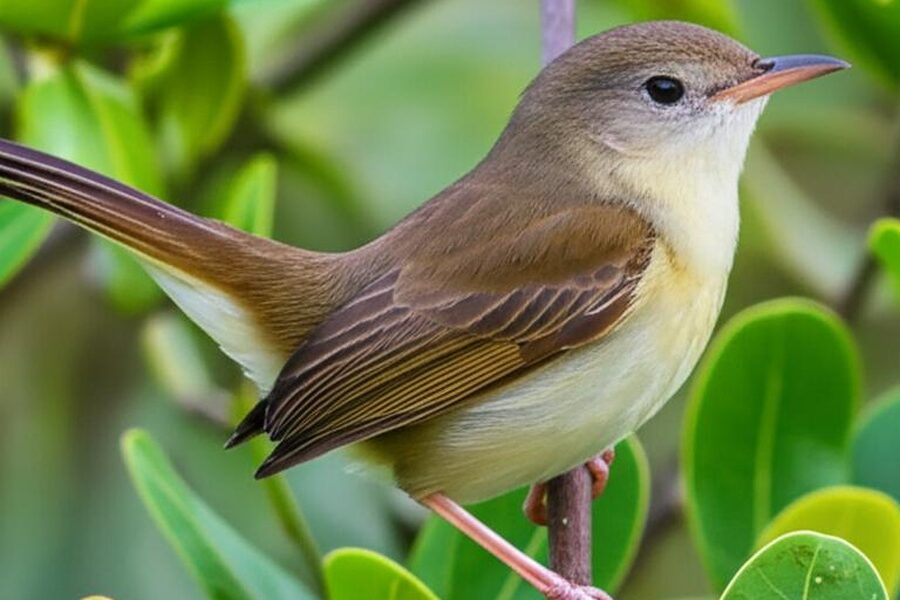Eritrea’s mix of Red Sea coast, desert lowlands and cool highlands supports a surprising variety of reptiles. Watching where they occur — along wadis, rocky outcrops or acacia woodlands — helps explain how the country’s habitats shape species distributions.
There are 63 Reptiles of Eritrea, ranging from the African Chameleon to the Yellow-throated Plated Lizard. For each species we list Scientific name,Eritrean range,IUCN status so you can see identity, local occurrence and conservation standing; you’ll find the full list and details below.
What habitats and regions in Eritrea should I visit to see different reptiles?
Reptiles are habitat-specific: coastal plains and coral islands host different species than the Danakil Depression or highland scrub. Visit wadis and rocky slopes after the rains for active lizards and snakes, and check shaded, vegetated areas for chameleons; timing (season and temperature) matters more than exact location.
How can this list help with identification and conservation awareness?
By pairing Scientific name,Eritrean range,IUCN status you get a clear snapshot of each species, where it’s been recorded in Eritrea and its global risk level — useful for field ID, reporting sightings, or prioritizing local conservation efforts.
Reptiles of Eritrea
| Common name | Scientific name | Eritrean range | IUCN status |
|---|---|---|---|
| African Spurred Tortoise | Centrochelys sulcata | Western lowlands near Sudanese border; arid savanna and scrubland | Endangered |
| Green Sea Turtle | Chelonia mydas | Dahlak Archipelago and Red Sea coast; coastal waters, nesting beaches | Endangered |
| Hawksbill Sea Turtle | Eretmochelys imbricata | Dahlak Archipelago and Red Sea coast; coral reefs and rocky areas | Critically Endangered |
| Leatherback Sea Turtle | Dermochelys coriacea | Offshore Red Sea waters; pelagic open ocean | Vulnerable |
| Olive Ridley Sea Turtle | Lepidochelys olivacea | Red Sea coastal waters; shallow marine habitats | Vulnerable |
| African Helmeted Turtle | Pelomedusa subrufa | Freshwater sources in western and central Eritrea; ponds, marshes | Least Concern |
| Nubian Flapshell Turtle | Cyclanorbis elegans | Historically in Gash River system; large rivers | Critically Endangered |
| Nile Crocodile | Crocodylus niloticus | Historically in Setit and Gash rivers; now extremely rare or absent | Least Concern |
| Spiny Agama | Agama spinosa | Arid rocky lowlands and coastal plains; rock outcrops, semi-desert | Least Concern |
| Doria’s Agama | Agama doriae | Ethiopian-Eritrean highlands; rocky areas, montane savanna | Least Concern |
| Eritrean Rock Agama | Acanthocercus annectens | Highlands and escarpment; rocky outcrops and savannas | Least Concern |
| Sinai Agama | Pseudotrapelus sinaitus | Coastal and eastern rocky areas; arid mountains, wadis | Least Concern |
| Spotted Toad-headed Agama | Phrynocephalus maculatus | Danakil Depression; salt flats, sandy plains | Least Concern |
| Ocellated Spiny-tailed Lizard | Uromastyx ocellata | Red Sea coastal plains; arid, rocky desert regions | Least Concern |
| African Chameleon | Chamaeleo africanus | Western lowlands, often near rivers; moist savanna, riverine vegetation | Least Concern |
| Savannah Monitor | Varanus exanthematicus | Western lowlands; savanna, grassland, and open woodland | Least Concern |
| Nile Monitor | Varanus niloticus | Near permanent water in lowlands and highlands; rivers, marshes | Least Concern |
| Ocellated Skink | Chalcides ocellatus | Widespread throughout Eritrea; diverse habitats from coast to highlands | Least Concern |
| Five-lined Skink | Heremites quinquetaeniatus | Widespread in savanna and rocky areas; semi-arid regions | Least Concern |
| Variable Skink | Heremites varius | Widespread in savanna and semi-desert; varied habitats | Least Concern |
| Schneider’s Skink | Eumeces schneiderii | Western lowlands and central highlands; dry woodland, rocky slopes | Least Concern |
| Common Writhing Skink | Lygosoma sundevalli | Western and central lowlands; savanna, beneath logs and stones | Least Concern |
| Speckled Sand Skink | Scincus mitranus | Coastal sandy deserts; sand dunes, arid plains | Least Concern |
| Bosk’s Fringe-toed Lizard | Acanthodactylus boskianus | Coastal plains and arid lowlands; sandy and gravelly deserts | Least Concern |
| Yellow-throated Plated Lizard | Gerrhosaurus flavigularis | Western lowlands; savanna, open woodland | Least Concern |
| Long-tailed Lacerta | Latastia longicaudata | Widespread in arid and semi-arid lowlands; savanna, scrubland | Least Concern |
| Spotted Sand Lizard | Mesalina guttulata | Coastal plains and eastern lowlands; arid gravel plains, wadis | Least Concern |
| Eritrean Sand Racer | Pseuderemias mucronata | Coastal plains and eastern lowlands; arid sandy and gravel plains | Least Concern |
| Hasselquist’s Fan-footed Gecko | Ptyodactylus hasselquistii | Rocky areas and human dwellings; cliffs, caves, buildings | Least Concern |
| Red Sea Fan-footed Gecko | Ptyodactylus ragazzii | Red Sea coastal hills and islands; rocky cliffs, arid mountains | Least Concern |
| White-spotted Wall Gecko | Tarentola annularis | Northern and western regions; buildings, rocky outcrops | Least Concern |
| Rock Semaphore Gecko | Pristurus rupestris | Widespread in rocky areas; deserts, semi-deserts, coastlines | Least Concern |
| Robust House Gecko | Hemidactylus robustus | Coastal areas and Dahlak islands; human dwellings, rocky areas | Least Concern |
| Steudner’s Dwarf Gecko | Tropiocolotes steudneri | Eastern lowlands and coastal desert; sandy and gravel plains | Least Concern |
| Pointed-headed Worm Lizard | Geocalamus acutus | Eastern lowlands; arid sandy soils | Not assessed |
| Short-headed Worm Lizard | Agamodon anguliceps | Eastern lowlands, Danakil; coastal plains, sandy soils | Least Concern |
| Puff Adder | Bitis arietans | Widespread except for driest deserts; savanna, grassland, rocky hills | Least Concern |
| Northeast African Saw-scaled Viper | Echis pyramidum | Widespread in arid regions; semi-desert, rocky wadis, savanna | Least Concern |
| Painted Saw-scaled Viper | Echis coloratus | Coastal mountains and eastern escarpment; rocky deserts, wadis | Least Concern |
| Arabian Horned Viper | Cerastes gasperettii | Coastal desert, Danakil region; sand dunes, arid plains | Least Concern |
| Egyptian Cobra | Naja haje | Lowlands and escarpment; savanna, semi-desert, agricultural areas | Least Concern |
| Nubian Spitting Cobra | Naja nubiae | Arid lowlands and eastern escarpment; rocky savanna and scrubland | Least Concern |
| Black Mamba | Dendroaspis polylepis | Western lowlands, Gash-Barka region; savanna, rocky outcrops | Least Concern |
| African Rock Python | Python sebae | Western lowlands near water; savanna, forests, rocky outcrops | Not assessed |
| Kenyan Sand Boa | Eryx colubrinus | Arid lowlands and coastal plains; sandy and soft soils | Least Concern |
| Somali Sand Boa | Eryx somalicus | Eastern lowlands, Danakil region; arid scrubland, sandy soils | Least Concern |
| Common Egg-eater | Dasypeltis scabra | Widespread in various habitats; savanna, woodland, agricultural areas | Least Concern |
| Brown House Snake | Boaedon fuliginosus | Widespread in varied habitats; savanna, woodland, human settlements | Least Concern |
| Ethiopian House Snake | Lamprophis abyssinicus | Eritrean highlands; montane grassland, rocky slopes | Not assessed |
| Diadem Snake | Spalerosophis diadema | Arid lowlands and coastal plains; desert, semi-desert, scrubland | Least Concern |
| Moila Snake | Malpolon moilensis | Arid coastal plains and Danakil Depression; sandy desert, gravel plains | Least Concern |
| Hissing Sand Snake | Psammophis sibilans | Widespread in mesic habitats; savanna, grassland, near water | Least Concern |
| Schokari’s Sand Snake | Psammophis schokari | Widespread in arid regions; desert, semi-desert, rocky wadis | Least Concern |
| Striped-bellied Sand Snake | Psammophis subtaeniatus | Western lowlands; dry savanna and bushland | Least Concern |
| Dhara’s Cat Snake | Telescopus dhara | Eastern lowlands and escarpment; arid, rocky habitats | Least Concern |
| Obtuse Cat Snake | Telescopus obtusus | Eastern escarpment, coastal hills; rocky semi-desert | Least Concern |
| Diadem Sand Snake | Lytorhynchus diadema | Arid lowlands and coastal plains; sandy desert habitats | Least Concern |
| Rufous Beaked Snake | Rhamphiophis oxyrhynchus | Western lowlands; arid savanna and scrubland | Least Concern |
| Half-ornamented Snake | Meizodon semiornatus | Western lowlands near Sudan border; moist savanna, floodplains | Least Concern |
| Hook-snouted Worm Snake | Myriopholis macrorhyncha | Arid and semi-arid regions; sandy and loamy soils | Least Concern |
| Bracciani’s Worm Snake | Myriopholis braccianii | Arid western lowlands; sandy and alluvial soils | Least Concern |
| Lined Blind Snake | Afrotyphlops lineolatus | Western lowlands, Gash-Barka region; moist savanna, agricultural land | Least Concern |
| European Worm Snake | Xerotyphlops vermicularis | Northern coastal plains; scrubland, rocky hillsides | Least Concern |
Images and Descriptions
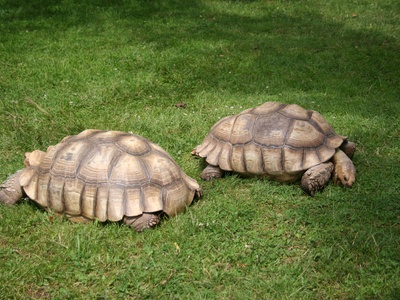
African Spurred Tortoise
The world’s third-largest mainland tortoise, with prominent conical spurs on its thighs. It digs deep burrows to escape the heat and is a powerful symbol of the Sahelian ecosystem, though threatened by habitat loss and collection.
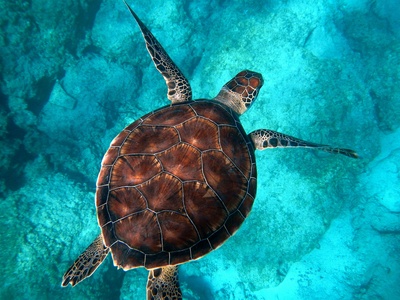
Green Sea Turtle
A large, herbivorous sea turtle with a smooth, heart-shaped shell. Females return to Eritrean beaches to lay their eggs. Named for its green-colored body fat, it faces threats from pollution, poaching, and habitat degradation.
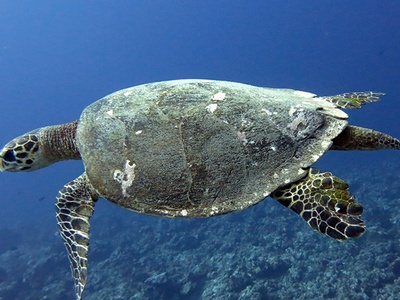
Hawksbill Sea Turtle
This turtle has a beautiful, overlapping scute pattern on its shell, which led to over-harvesting. It uses its hawk-like beak to feed on sponges in coral reefs. Its presence highlights the ecological importance of Eritrea’s marine parks.
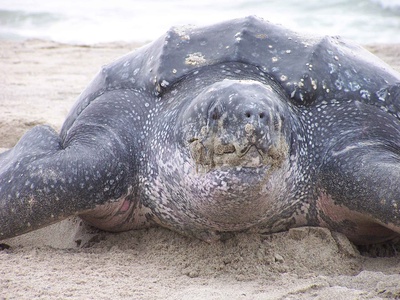
Leatherback Sea Turtle
The largest turtle, distinguished by its leathery, ridged shell instead of a hard one. It is a rare visitor to Eritrean waters, feeding on jellyfish in the open ocean. A true giant of the sea, it is a magnificent sight.
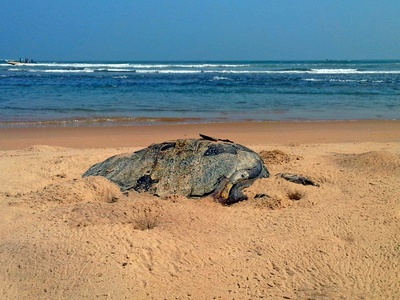
Olive Ridley Sea Turtle
The smallest and most abundant sea turtle, known for its olive-green, heart-shaped shell. They are known for their synchronized mass nesting events, called arribadas, though these are not documented in Eritrea. They feed on invertebrates.
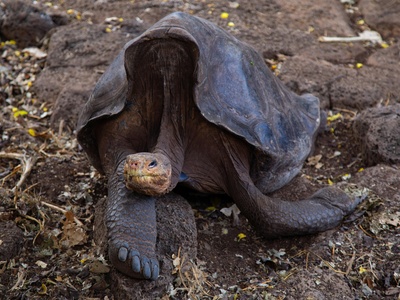
African Helmeted Turtle
A common freshwater turtle with a distinctive large head it cannot fully retract. Instead, it tucks its head to the side under its shell. It’s an opportunistic omnivore, found in slow-moving water bodies across the country.
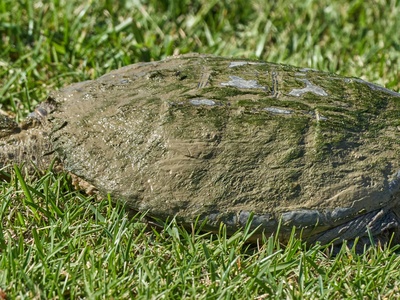
Nubian Flapshell Turtle
A large, softshell turtle with flexible flaps on its plastron to cover its legs. It is feared to be extinct in Eritrea and much of its range due to dam construction and habitat loss, with no recent confirmed sightings.
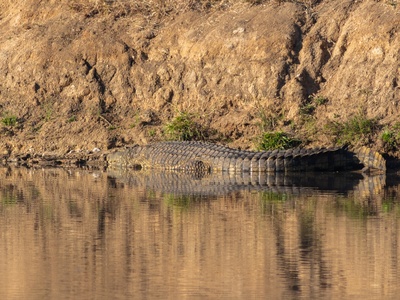
Nile Crocodile
Africa’s largest crocodilian, a formidable apex predator. While historically present in western Eritrean rivers, its current population is critically low or extirpated due to hunting and habitat changes, making any sighting exceptionally rare and significant.
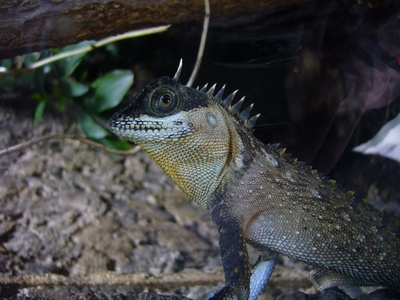
Spiny Agama
A robust, spiny-tailed lizard. Breeding males display a stunning bright blue head and body, contrasting with an orange tail. They are commonly seen basking on rocks, performing push-up displays to defend their territory from rivals.
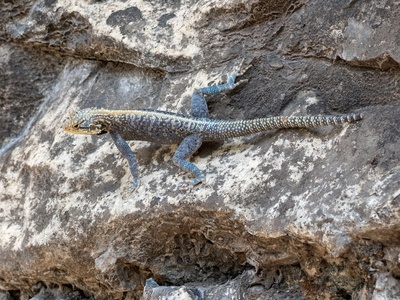
Doria’s Agama
A large, dark-headed agama found in the highlands. Males develop a striking blue-gray head and yellow-green forelimbs during the breeding season. It is well-adapted to cooler, high-altitude rocky environments, often seen near cliffs.
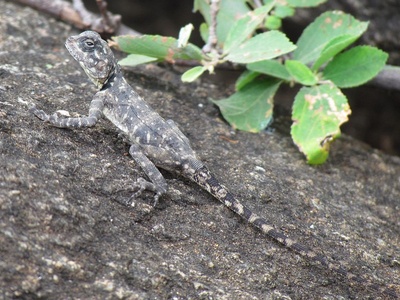
Eritrean Rock Agama
A medium-sized agama with a distinctly spiny tail. Males have a bright blue or turquoise head. They live in colonies on rock formations, where they are agile climbers, feeding on insects and other small invertebrates.
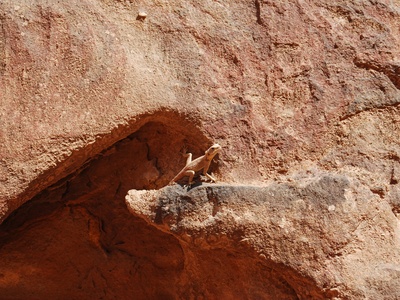
Sinai Agama
A small, slender agama known for the brilliant blue color males develop during breeding season to attract females. It is an agile climber, often seen on rocks and boulders where it basks and hunts for insects.
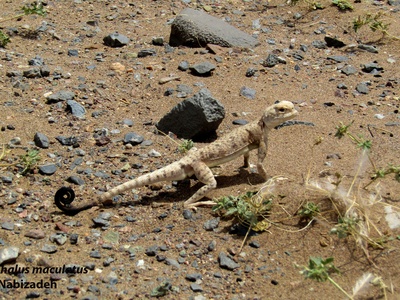
Spotted Toad-headed Agama
A small, ground-dwelling agama with a flattened body and a short, wide head. It lives in barren salt flats and sand plains, relying on its cryptic coloration. When threatened, it can rapidly bury itself in the sand.
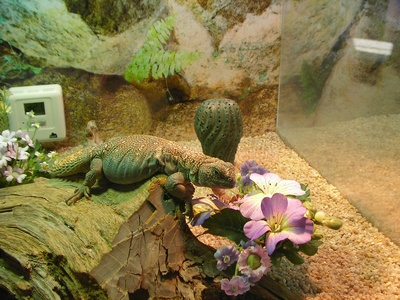
Ocellated Spiny-tailed Lizard
A colorful, herbivorous lizard with a spiny, club-like tail used for defense. Its skin is patterned with striking red, yellow, or blue spots (ocelli). It lives in burrows among rocks to escape the extreme desert heat.
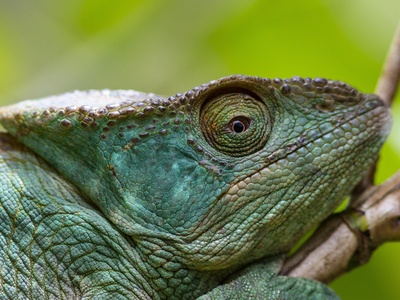
African Chameleon
A large, typically green or brownish chameleon found in more humid lowlands. It prefers bushes and trees along watercourses, where it patiently hunts insects with its long, projectile tongue. It can adapt its color for camouflage.
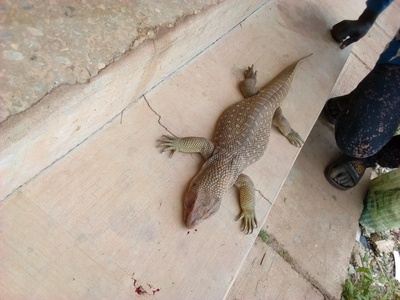
Savannah Monitor
A stocky and powerful monitor lizard with a wide head and strong limbs. It is a terrestrial forager, actively hunting for insects, small reptiles, and eggs. It relies on its powerful bite and claws for defense.
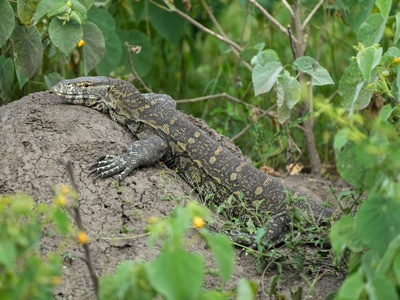
Nile Monitor
One of Africa’s largest lizards, a semi-aquatic predator with a streamlined body and powerful tail for swimming. It’s an intelligent and adaptable hunter, feeding on everything from crocodile eggs to crabs, fish, and small mammals.
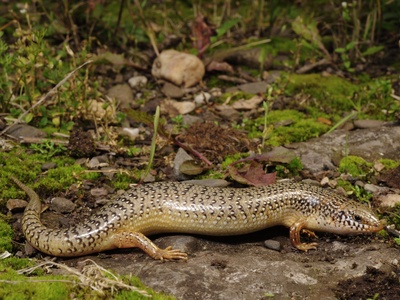
Ocellated Skink
A very common, smooth-scaled skink with a cylindrical body and small legs. It has a glossy appearance with numerous eye-spots (ocelli). Often seen scurrying through leaf litter or basking in sunny spots, even in gardens.
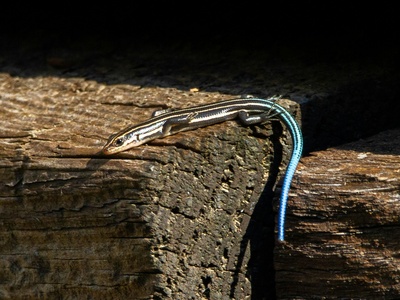
Five-lined Skink
Juveniles and females are striking, with a black body, five bright yellow stripes, and a vivid blue tail. This bright coloration fades in adult males, which develop a reddish-orange head during the breeding season.
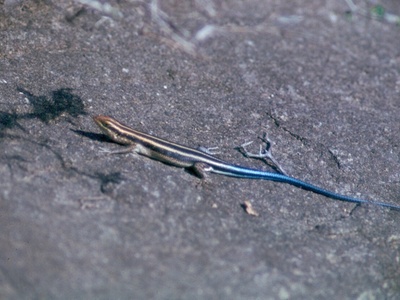
Variable Skink
A small, adaptable skink whose pattern is highly variable, often featuring dark stripes or spots on a brownish background. This common lizard is often found under rocks and logs, feeding on small insects and spiders.
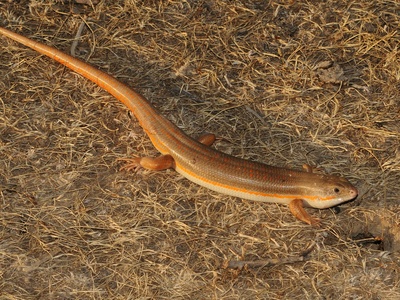
Schneider’s Skink
A large, robust skink with a powerful build and smooth, glossy scales. It often has a bright orange or yellow stripe along its side. This omnivorous lizard feeds on insects, small vertebrates, and even fruit.
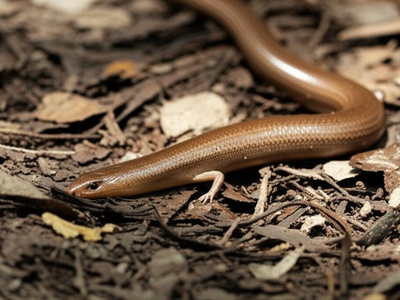
Common Writhing Skink
A burrowing skink with a long, serpentine body and very small limbs. It “swims” through loose soil and leaf litter. When handled, it writhes frantically, making it difficult to hold. It feeds on termites and other soil insects.
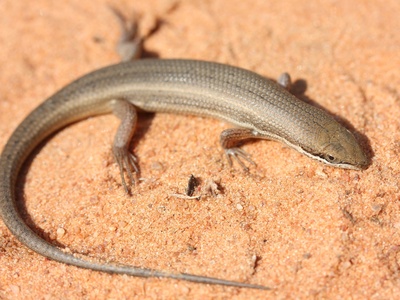
Speckled Sand Skink
A true sand-swimmer, this skink has a wedge-shaped snout and smooth scales to move effortlessly through sand. It dives into the sand to escape predators or heat, hunting for insects just below the surface.
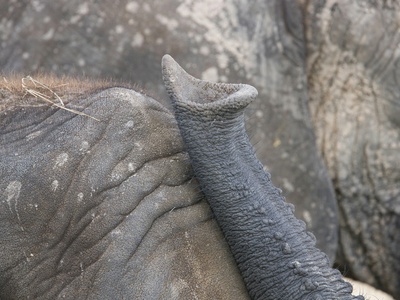
Bosk’s Fringe-toed Lizard
A fast-moving desert lizard with specialized scales (fringes) on its toes that allow it to run quickly over loose sand. It has a slender body with stripes and spots, providing excellent camouflage in its sandy habitat.
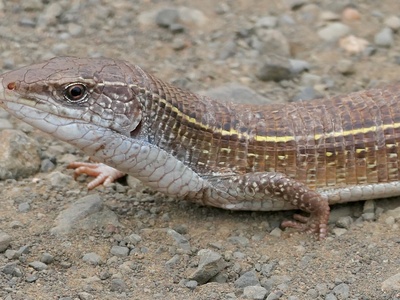
Yellow-throated Plated Lizard
A large, fast-moving lizard with a robust, rectangular-scaled body. During the breeding season, males develop a brilliant yellow, orange, or red throat. It lives in burrows and forages actively for insects and plant matter.
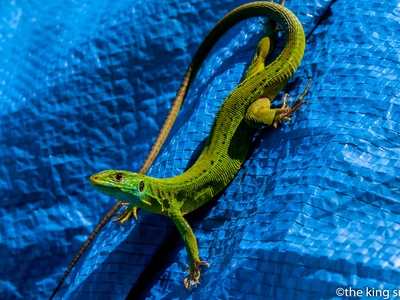
Long-tailed Lacerta
A slender lizard defined by its incredibly long tail, often twice its body length. It is an active, diurnal hunter, constantly on the move searching for insects. Its long tail provides balance while running at high speeds.
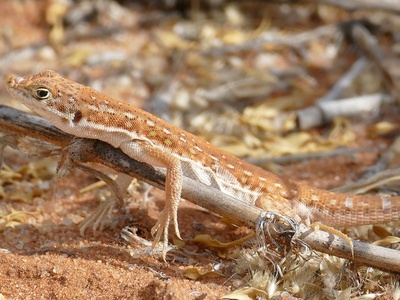
Spotted Sand Lizard
A small, ground-dwelling lizard with a pattern of small spots or dashes. It is a very fast and active diurnal forager, constantly moving as it searches for small insects and other arthropods in sparsely vegetated desert areas.
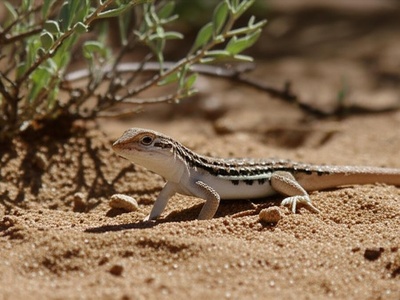
Eritrean Sand Racer
A small, fast-moving lizard perfectly adapted to desert life. It has a pointed snout and a striped or spotted pattern that blends into the arid landscape. Often seen dashing between sparse bushes in search of insect prey.

Hasselquist’s Fan-footed Gecko
A large gecko with prominent fan-shaped toe pads that allow it to climb sheer rock faces and walls with ease. It is nocturnal, emerging at dusk to hunt for insects attracted to lights on buildings.

Red Sea Fan-footed Gecko
A gecko adapted to hyper-arid, rocky environments along the Red Sea coast. Its large, fanned toe pads give it an exceptional grip on sheer rock faces. It is nocturnal, hunting insects in one of the world’s hottest regions.

White-spotted Wall Gecko
A large, robust gecko, typically grey or brown with distinctive pairs of white spots on its back. It is a common sight in human settlements, where it can be found on walls at night, hunting insects.

Rock Semaphore Gecko
A small, slender, diurnal gecko known for its unique tail-waving communication, resembling semaphore signals. It is extremely common on rocks and walls, where it actively hunts for small insects during the day.

Robust House Gecko
A common, adaptable gecko found throughout coastal Eritrea, especially in towns and villages. Its nocturnal habits and appetite for insects make it a welcome resident in many homes. It is characterized by its bumpy skin and pale coloration.
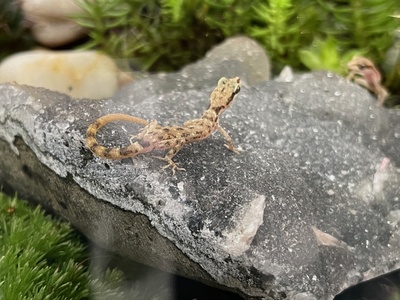
Steudner’s Dwarf Gecko
A minuscule terrestrial gecko, one of the smallest reptiles in Eritrea. It is nocturnal, emerging at night to hunt for tiny insects. Its delicate, translucent skin provides camouflage against the sand and gravel of its habitat.
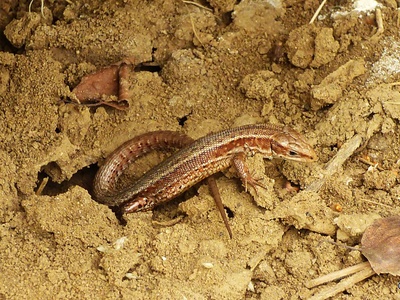
Pointed-headed Worm Lizard
Not a snake or lizard, this is a legless amphisbaenian that lives entirely underground. It has a pointed, reinforced head for burrowing and a pinkish, ringed body. It is rarely seen except when accidentally unearthed.
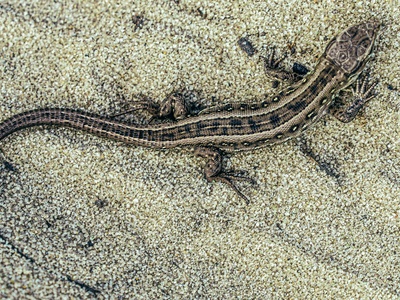
Short-headed Worm Lizard
A specialized, legless amphisbaenian adapted for burrowing in coastal sands. It has a short, shovel-shaped head and a compact, ringed body. It is a secretive species, feeding on invertebrates underground.
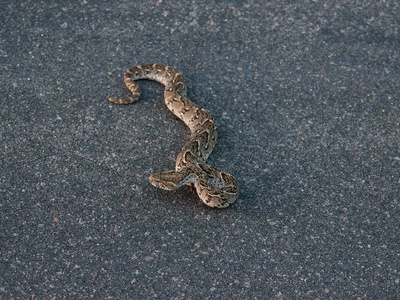
Puff Adder
A thick-bodied, highly venomous viper with a chevron pattern. It is famous for its loud hiss and ambush hunting style, relying on its exceptional camouflage to strike at passing prey. It is a major cause of snakebite in Africa.
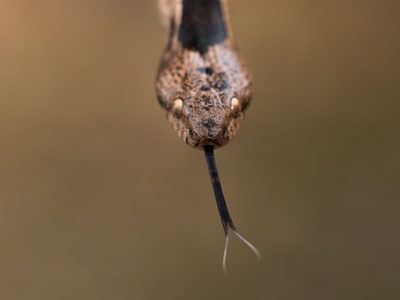
Northeast African Saw-scaled Viper
A small, highly irritable viper responsible for numerous snakebites. It produces a distinctive rasping sound by rubbing its serrated scales together as a warning. Its potent venom and cryptic pattern make it extremely dangerous.
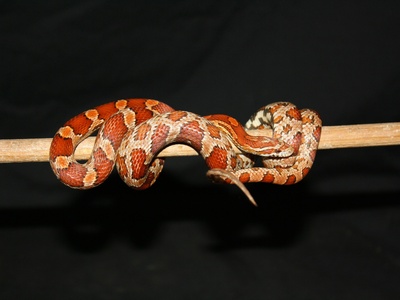
Painted Saw-scaled Viper
Larger than other saw-scaled vipers, with a more vibrant, blotched pattern that provides excellent camouflage among rocks. It is a nocturnal ambush predator, feeding on lizards and rodents in arid, mountainous terrain.
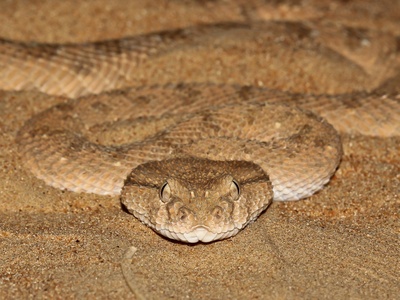
Arabian Horned Viper
A classic desert viper with prominent “horns” (modified scales) above its eyes, though some individuals may lack them. It is a nocturnal ambush predator that uses sidewinding locomotion to move across loose sand.
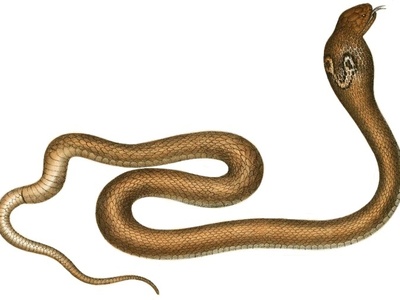
Egyptian Cobra
An iconic, large cobra known for its classic hood-spreading defensive display. Its venom is dangerously neurotoxic. This snake is adaptable, often found near human settlements and agricultural fields, where it hunts rodents and birds.
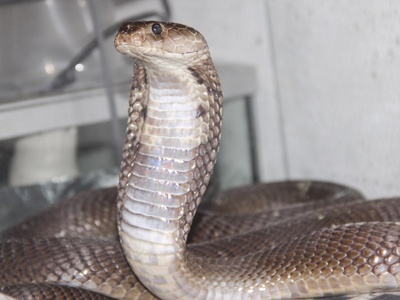
Nubian Spitting Cobra
A smaller relative of the Egyptian cobra, capable of accurately spitting venom into the eyes of a threat. It has a more slender build and is typically a uniform brown or grey. It prefers arid, rocky habitats.
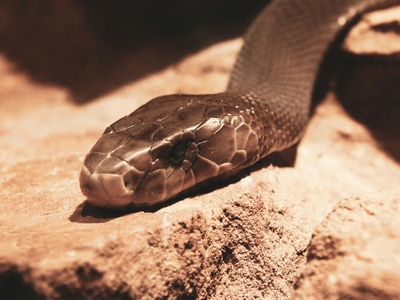
Black Mamba
One of the world’s fastest and most venomous snakes. Despite its name, it is typically grey or olive, with a black mouth lining it displays when threatened. It is an agile, active predator of birds and small mammals.
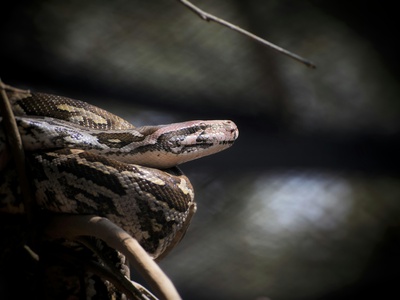
African Rock Python
Africa’s largest snake, a powerful non-venomous constrictor. It can reach over 5 meters in length and preys on animals as large as small antelope. It is often found near rivers and waterholes, where it ambushes its prey.
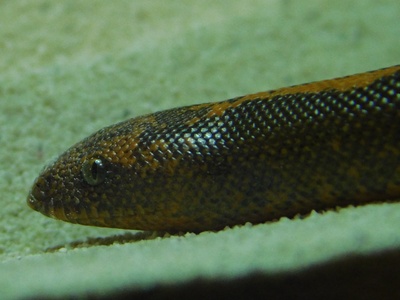
Kenyan Sand Boa
A small, stout-bodied boa that spends most of its life burrowed in sand. It ambushes small rodents and lizards from beneath the surface, striking with surprising speed. Its smooth scales and pointed head aid in burrowing.
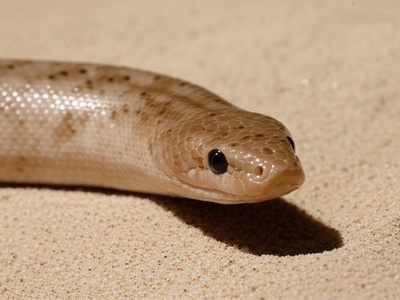
Somali Sand Boa
A small, heavy-bodied boa that is a close relative of the Kenyan Sand Boa. It is a secretive, burrowing species that ambushes small rodents from beneath the sand. Its Eritrean range is in the far southeast.
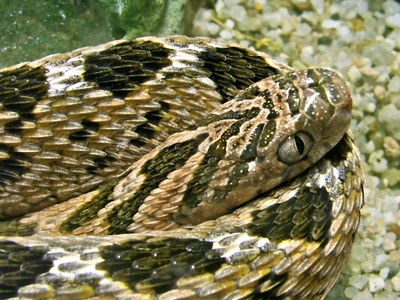
Common Egg-eater
A harmless, specialized snake that feeds exclusively on birds’ eggs. It can swallow eggs much larger than its head, thanks to a highly flexible jaw. After draining the contents, it regurgitates the crushed shell.
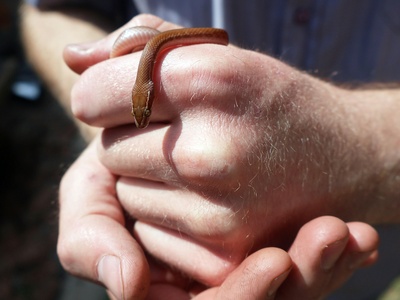
Brown House Snake
A common, harmless constrictor often found near human dwellings, where it plays a beneficial role by preying on rodents. It is typically uniform brown and is known for the iridescent sheen of its scales in the light.
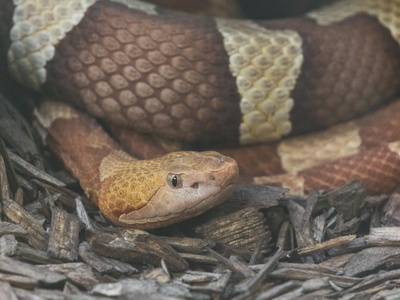
Ethiopian House Snake
A small, harmless constrictor found at high elevations in the Horn of Africa. It has a glossy brown or black appearance and is adapted to the cooler climate of the highlands, where it preys on rodents and shrews.
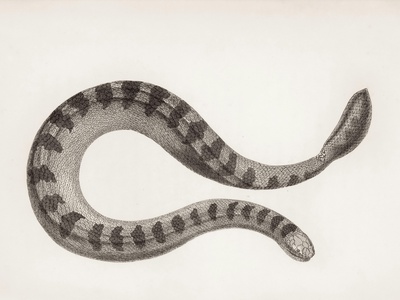
Diadem Snake
A large, powerful, non-venomous snake with a distinctive pattern of dark, diamond-shaped blotches. It is an active hunter of rodents and lizards. When threatened, it may hiss loudly and strike, mimicking a viper.
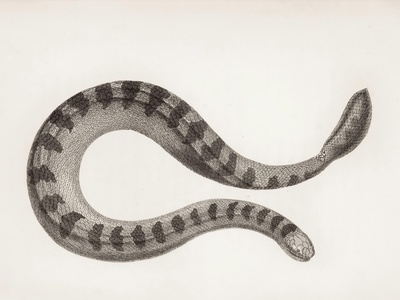
Moila Snake
A rear-fanged, mildly venomous snake adapted to desert life. It has large eyes and a pointed snout, often “periscoping” to survey its surroundings. It actively hunts lizards and rodents during the day.
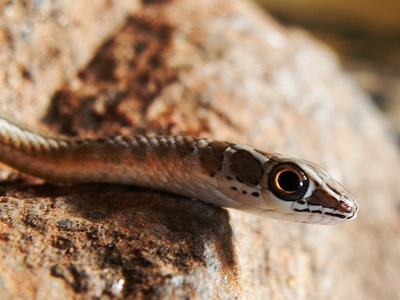
Hissing Sand Snake
A very common, fast, and slender snake with a variable striped pattern. It is a diurnal hunter of lizards, frogs, and small rodents. Despite being rear-fanged and mildly venomous, it poses no significant danger to humans.
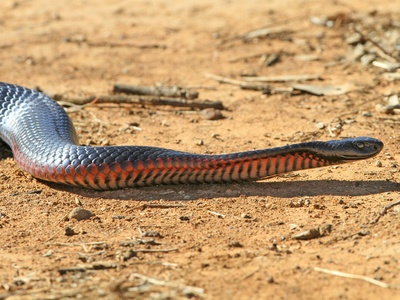
Schokari’s Sand Snake
A slender, fast-moving snake well-adapted to dry environments. Its coloration provides excellent camouflage in sand and rock. It actively pursues lizards and small rodents during the day, relying on its keen eyesight.
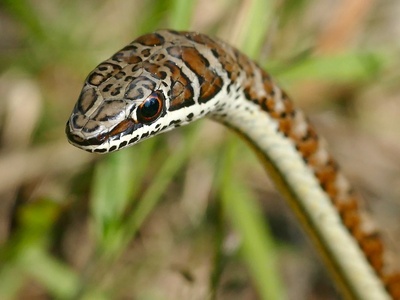
Striped-bellied Sand Snake
A fast, slender snake identified by two prominent pale stripes running down its back and a striped belly. It is an active diurnal hunter, preying mainly on lizards which it pursues with great speed through the savanna.
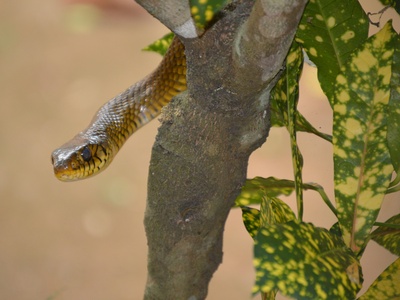
Dhara’s Cat Snake
A nocturnal, rear-fanged snake with vertical pupils, like a cat. It is a skilled climber, often found in rocky areas and on trees, where it hunts for lizards, geckos, and small birds.
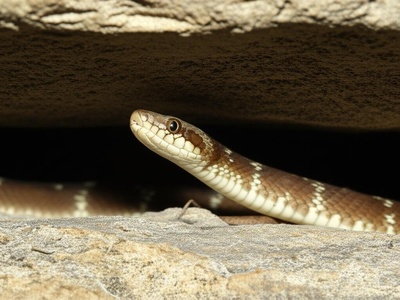
Obtuse Cat Snake
A nocturnal, rock-dwelling snake with a blunt snout and vertical pupils. It is an adept climber, preying on sleeping lizards and geckos in rock crevices. It is mildly venomous but secretive and rarely encountered.
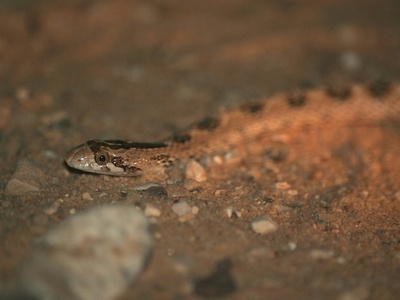
Diadem Sand Snake
A small, nocturnal burrower with a shovel-like snout used for digging in loose sand. It is named for the dark, diadem-like marking on its head. It feeds primarily on geckos and other small desert lizards.
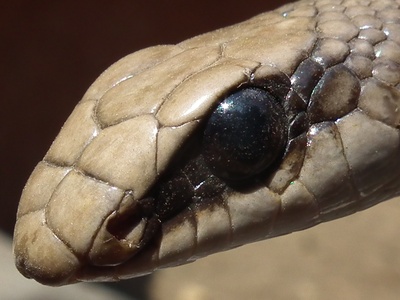
Rufous Beaked Snake
A large, fast-moving, diurnal snake with a distinctive sharp, hooked snout used for digging. It actively forages for rodents, lizards, and other snakes. It is rear-fanged and mildly venomous but not dangerous to humans.
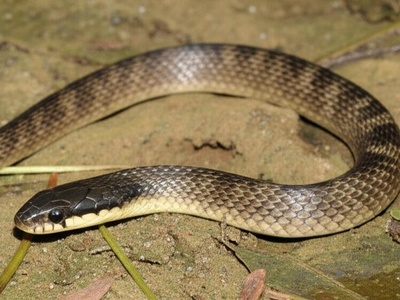
Half-ornamented Snake
A small, slender, semi-aquatic snake often found near water. It has a dark head and a lightly patterned body. It feeds primarily on frogs and tadpoles in damp habitats. It is harmless to humans.
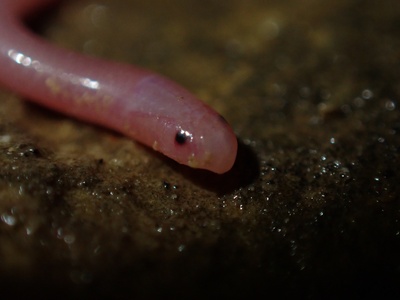
Hook-snouted Worm Snake
A tiny, burrowing snake resembling an earthworm, with a distinctive hooked rostral scale. It lives underground, feeding on ant and termite larvae. Its eyes are vestigial, visible only as small dark spots under the scales.
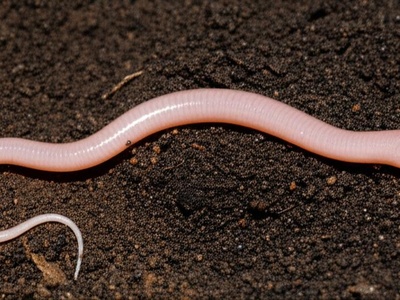
Bracciani’s Worm Snake
A tiny, pinkish, burrowing snake that lives its entire life underground. It is blind, with vestigial eyes, and feeds on the eggs and larvae of ants and termites. It is rarely seen on the surface.
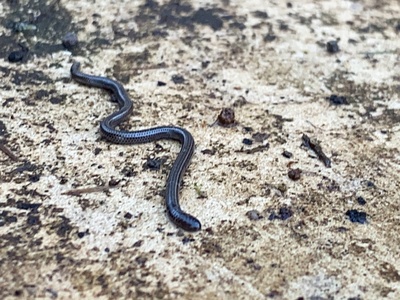
Lined Blind Snake
A medium-sized, burrowing snake with distinct longitudinal dark lines on a yellowish background. It is often uncovered after heavy rains or by farmers ploughing fields. It feeds primarily on termites and their larvae.
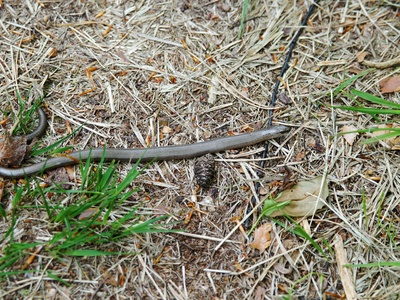
European Worm Snake
A small, pink, worm-like snake that is a fossorial insectivore. Despite its name, its range extends into Eritrea. It is usually found under stones or in loose soil, where it hunts for ant pupae.
